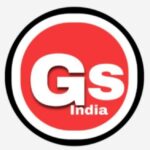कृपया आप सभी से निवेदन है कि आप पहले इन प्रश्नों को सॉल्व करेंगे फिर इसके बाद इन प्रश्नों के सही उत्तर देखने के लिए अंत में नीचे दिए गए उत्तर कुंजी (आंसर-की) में जाएंगे।।
Q1. रोगी की कपाल तंत्रिकाओं का आकलन करते समय, नर्स रोगी से भौंहें ऊपर उठाने, मुस्कुराने और दांत दिखाने के लिए कहती है ताकि यह पता लगाया जा सके कि कौन सी कपाल तंत्रिका:
While assessing a patient’s cranial nerves, the nurse ask the patient to raise the eyebrows, smile and show the teeth to assess which cranial nerve:
A. Vagus
B. Facial
C. Olfactory
D. Optic
Q2. सिर और कंधों की गति को नियंत्रित करता है:
The movement of the head and shoulders is controlled by the:
A. Abducens nerve
B. Glossopharyngeal nerve
C. Accessory nerve
D. Hypoglosal nerve
Q3. तंत्रिका सुनने और संतुलन बनाए रखती है:
The nerve maintain hearing and balance:
A. Vestibulocochlear
B. Vagus
C. Facial
D. Trochlear
Q4. निम्नलिखित में से कौन सी तीसरी कपाल तंत्रिका है?
Which of the following is the third cranial nerve?
A. Oculomotor nerve
B. Optic nerve
C. Abducens nerve
D. Trochlear nerve
Q5. निम्नलिखित में से कौन सी तंत्रिका ऊपरी पलकों को ऊपर उठाने में मदद करती है?
Which of the following nerve helps in raising the upper eyelids?
A. Optic nerve
B. Oculomotor nerve
C. Facial nerve
D. Trigeminal nerve
Q6. जबड़े में तंत्रिका आपूर्ति किस तंत्रिका द्वारा होती है?
Nerve supply to jaw occur by which nerve-
A. Temporal nerve
B. Maxillary nerve
C. Optihalmic nerve
D. Zygomatic nerve
Q7. दोनों निचले अंगों के पक्षाघात को क्या कहते हैं?
The paralysis of both lower limbs is known as
A. Hemiplegia
B. Paraplegia
C. Monoplegia
D. Quadriplegia
Q8. ऊपरी प्लेक्सस में चोट लगने पर:
An injury to the upper plexus in:
A. Facial palsy
B. Erb’s palsy
C. Phrenic nerve palsy
D. Klimkr’s palsy
Q9. 5 वर्ष से कम उम्र के बच्चों को प्रभावित करने वाला सबसे आम प्रकार का मेनिन्जाइटिस है:
Most common type of meningitis that affects children less than 5 years is:
A. Tuberculous meningitis
B. Bacterial meningitis
C. Aseptic meningitis
D. Idiopathic meningitis
Q10. तीव्र सिरदर्द, उल्टी और गर्दन में अकड़न इसके प्रारंभिक लक्षण हैं:
Intense headache vomiting and stiff neck are initial symptoms of:
A. Pneumonia
B. Meningococcal meningitis
C. Tuberclossis
D. Acute respiratory syndrome
Q11. नवजात मैनिंजाइटिस का सबसे आम रूप है:
The most common presentation of neonatal meningitis is:
A. Poor feeding
B. Convulsions
C. Bulging fontanels
D. Nuchal rigidity
Q12. छोटे बच्चों में मैनिंजाइटिस की सबसे गंभीर जटिलता क्या है?
What is the most serious complication meningitis in young children?
A. Epilepsy
B. Peripheral circulatory collapse
C. Blindness
D. Communicating hydrocephalus
Q13. निम्नलिखित में से कौन सा परीक्षण नाक से निकलने वाले स्राव से निकलने वाले बलगम और मस्तिष्कमेरु द्रव (CSF) के बीच अंतर करने वाला परीक्षण है:
Which of the following is a differentiating test between mucus and cerebrospinal fluid (CSF) from a nasal discharge:
A. Specific gravity
B. Protein
C. Microorganisms
D. Glucose
Q14. तंत्रिका बुखार, सिरदर्द और गर्दन में अकड़न से पीड़ित बच्चे के माता-पिता को सिखाती है कि बच्चे में मैनिंजाइटिस के निदान की पुष्टि करने के लिए उपयोग किया जाने वाला परीक्षण है:
The nerve teach the parents of a child with fever headache and a stiff neck, that the test use to confirm the diagnosis of meningitis in a child is a:
A. Blood culture
B. Meningiomylogram
C. Lumbar puncture
D. Peripheral skin smear
Q15. साधारण या विशिष्ट ज्वर संबंधी दौरे निम्न स्थितियों में होते हैं:
Simple or typical febrile seizures occur in:
A. Infants below 3 months of age
B. 3 months to 5 years
C. 3 years -8 years
D. Pre adolescent
उपरोक्त प्रश्नों के उत्तर नीचे दिए गए हैं:
(Answer Keys)
Q1.Ans.**B. Facial
Q2.Ans.**C. Accessory nerve
••Note:: Accessory nerve: This nerve is also known as nerve XI and arises from two roots namely the cranial and spinal bones. This nerve controls swallowing movements and helps in the movement of head and shoulders.
Q3.Ans.**A. Vestibulocochlear
Q4.Ans.**A. Oculomotor nerve
Q5.Ans.**B. Oculomotor nerve
Q6.Ans.**B. Maxillary nerve
Q7.Ans.**B. Paraplegia
Q8.Ans.**B. Erb’s palsy
Q9.Ans.**C. Aseptic meningitis
••Note:: Most common type of meningitis that affects children less than 5 years is Aseptic meningitis.
Q10.Ans.**B. Meningococcal meningitis
Q11.Ans.**A. Poor feeding // उचित पोषण न मिलना
Q12.Ans.**D. Communicating hydrocephalus
••Note:: Communicating hydrocephalus occurs when the flow of CSF is blocked after it exits the ventricles.
Q13.Ans.**D. Glucose
Q14.Ans.**C. Lumbar puncture
Q15.Ans. **B. 3 months to 5 years
Note:: Febrile seizures are convulsions that occur in a child who is between six months and five years of age and has a temperature greater than 100.4ºF (38ºC). The majority of febrile seizures occur in children between 12 and 18 months of age.
मैं आशा करती हूं कि आपको यह बहुविकल्पी प्रश्न सीरीज (MCQ) पसंद आई होगी।
धन्यवाद!!
Writer: Vandita Singh, Lucknow
(By GS India Nursing Classes Lucknow)
